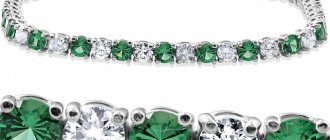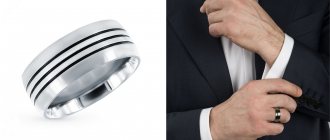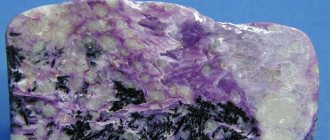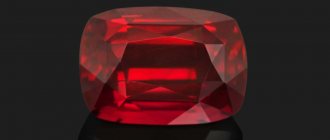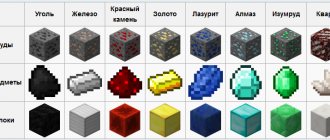Signs that promise good
When an insert falls out of a piece of jewelry, don’t be upset! Wise people even have a saying for such a case: “Thank you for taking it with money (jewelry)!”
- Has a stone disappeared from a ring that you attach special significance to? It could be a family heirloom, a talisman ring, or even an engagement ring. This means that the decoration took the blow. It is believed that talisman rings are able to counteract negative energy directed at their owner. When inserts are lost from a piece of jewelry or it breaks, the talisman ring becomes an ordinary piece of jewelry: it has already fulfilled its mission, standing up to protect the owner.
- A stone falls out of an unmarried girl's ring - a sign of an imminent wedding. Even if the groom is not there yet, you can hope for his soon appearance, and then the wedding is just around the corner.
- A lost insert promises a happy relationship with a partner. This is a sign for those who already have a life partner, and it applies to men and women equally.
Corner tacks
Corner setting is a method of fastening stones directly into metal. In this case, the insert is fixed using small posts (corners), which are formed from the base metal of the frame with a special tool. The jeweler selects a piece of metal in the form of shavings and presses it against the edges of the stone. In this case, the upper part of the chips is rolled into a hemisphere using a root roller.
The following types of corner frames are distinguished:
- Classic corner setting. The stone is fixed with corners, while there is no additional processing around the stone or only the gloss is cut off.
Rice. 19. Scheme for installing stones for corner setting
- Faden setting. The stone is fixed with two or four corners, while a trim is made around the insert, forming an edge. Separately, a faden track is distinguished - this is a variant of the frame in which the strip of stones gradually tapers.
Rice. 20. Inlaid stone into a faden frame
- Faden-grisant setting. The stone is fixed with two or four corners, while an undercut is made around the insert, forming an edge on which a grisant (grained notch) is applied.
- The “square” setting. Setting with corners in the amount of 4 or 12 pieces, in which fadens or faden-grisants passing between the stones form squares. It is also possible that the square forms a formation of stones. On the back side of the base there is a hole for through penetration of light.
Rice. 21. Bracelet made using the square technique
- Star setting. A type of corner frame, where the stone is held by 4 corners, and the internal contours of the cut are cut in the form of a four or eight-pointed star or a square with concave sides.
Rice. 22. Types of star frames
- Pavé setting. A type of corner setting for fixing a scattering of a large number of small stones. The inserts are placed close to each other and are fixed with corners. In classic pav, the stones are positioned strictly horizontally and vertically. If there is a half-phase shift, this is a “tick” variety of pavé.
Rice. 23. Scheme of placement of stones for classic and teak pav
“Micro pavé” involves placing a very large number of small inserts of the same size: an influx of metal holds three nearby stones at once, which creates the feeling that the product consists of one large stone. Printed frames are a type of “tick” pavé. In it, the corners are soldered in the form of pins, rather than cut out of metal.
Rice. 24. Finished products using pavé technique
Interpretation of signs depending on the type of ring
The meaning of the sign is influenced not only by the type of stone, but also by the type of jewelry it fell from. This must be taken into account when interpreting, since the meaning completely changes.
Engagement
This ring is a symbol of love between two people; it has a special energy. If a pebble is lost, you need to restore it, otherwise the alliance is in jeopardy. Spouses will have to go through a crisis; quarrels, misunderstandings, and betrayals await them. The conflict can be so serious that it leads to divorce.
Stone insert
If, despite the correct use of the ring, the stone still falls out, but you manage to find it, get to any jewelry workshop, the master will immediately assess the complexity of the fastening and insert the stone right in front of you, if possible. With more complex fastening, the master will have to work from one to three days.
If a stone is lost, the master also inspects the ring for quick insertion, which he does if, of course, there is a similar stone in stock. If complex setting does not allow you to repair the jewelry immediately, your problem will be solved within a week. Selecting the right stone for mounting can be quite a challenge.
There are a great many types of stones, and even more colors. Sometimes a stone needs to be cut, which most often happens with all types of agates, mother-of-pearl, and turquoise. In rare cases, jewelry repair may take approximately three weeks.
Precious or inexpensive jewelry
All signs (positive and negative) are valid only for jewelry made of precious metals and natural stones. Artificial ones are not able to collect and store energy. They have no predictive value.
A product made of aluminum, nickel, tin and complemented with inserts of glass, zirconium and other ornamental stones is simply costume jewelry. Even when such a ring is expensive, it is still not valued in esotericism.
If an artificial stone falls out of the ring, the omen will not come true. You don't have to worry about this at all. There is no secret meaning in the disappearance. An expensive stone inserted into a product made of gold, silver or platinum will tell you the truth about the future.
Approximate prices for jewelry workshop services
By repairing jewelry, the life of earrings, chains, rings, pendants, bracelets and other accessories is extended.
The price for repairs increases depending on the size of the stones, the type of decoration, and the complexity of the work.
Price for work on setting, stone insertion
- Repair of cap - from 50 rubles.
- Replacing crowns using a laser – from 400 rubles.
Diamond Setting
- from 1 mm - 1.5 mm approximately from 250 rub.
- from 1.5 mm - 2 mm about 650 rubles.
- from 2 mm - 3 mm - from 1300 rub.
Setting semi-precious, ornamental or synthetic stones will cost the client 250 – 700 rubles. Precious (emerald, sapphire, ruby) - from 350 to 2,500 rubles.
Expensive accessories are valued as memories if they are inherited or given to us by a spouse, parents or friends. Thanks to them, a person feels that he is significant and loved.
Add our site to your browser bookmarks and
Expertise and guarantees
If the problem of a pebble falling out also affects you, there is no need to recklessly glue the pebble with superglue in the hope that it will be fixed for a long time. The stone will fade from the glue and its former beauty will be forgotten.
It happens that jewelry stores send customers with complaints to manufacturers. It is not necessary to go there, because according to the law, the client chooses who to make claims to: the manufacturer or the seller.
Jewelry often comes with a warranty. If the warranty period has not expired, we will send the jewelry for examination.
When it turns out that this is a manufacturing defect, the stone will be inserted free of charge. You can insist on replacing the product or refunding the costs - your decision. This is stated in Art. 18 of the Law “On Protection of Consumer Rights”.
When purchasing jewelry, the buyer can make a claim if defects in the product are discovered about two years after its purchase (Article 19 of the Law “On Protection of Consumer Rights”).
If the examination reveals that the product is damaged due to the fault of its owner, then you will have to reimburse the costs of the inspection, and repair the jewelry at your own expense.
But if there is no guarantee or the warranty period has expired, you will have to turn to the services of a jewelry workshop.
Workshops that value their reputation will provide a guarantee for the work done. For jewelry makers, setting and inserting stones is not a tricky business.
You may also be interested in the article on how to clean silver jewelry.
How to install the stone in place?
The easiest way to do this is with a gem strung on a pin. It will be enough to wipe the frame with alcohol, apply a specialized adhesive composition to it and place the stone in place. In the case of frames, the process will require much more effort. You will need to melt the clamp foot and secure it.
When is this not recommended?
Work with expensive jewelry should be entrusted to specialists. Even reading the detailed instructions and following all the rules is not a guarantee that the repair procedure will be carried out correctly and that no noticeable marks will remain.
In addition, there is no need to install the stone yourself as long as there is a valid warranty. There is always a way to force the store or craftsman to eliminate the shortcomings made at the stage of creating jewelry. Usually, to do this, it is enough to write a statement with reference to the law protecting consumer rights and attach the opinion of an independent expert to the paper.
Men's crochet beanie hat
How to choose a ring?
Why you can’t insert stones into rings yourself
Even if you found tips on the Internet on how to insert a stone with your own hands, if it falls out of the ring, do not follow such advice. Precious metals and stones require careful and professional handling, special equipment and tools. If you try to repair jewelry yourself, you can completely ruin it.
After professional stone insertion, the ring will look like new, no signs of repair will be visible.
Repairing a ring after inept actions by the owner is much more difficult.
Store and wear correctly
It is better to store jewelry with stones in a dark and dry box with free space between them.
It is also required to comply with certain rules for wearing products. Remove rings when washing your hands with soap, taking a bath, or doing housework.
Do not wear gloves over rings with stones, as the tabs that secure the stone may get caught on them and bend.
Sometimes it happens that even when jewelry is expensive, there is a risk of a defect in the product, in which a stone falls out.
What does the loss of a dropped pebble promise?
What does the loss of a stone from a ring warn about, depending on the type of natural gem:
- Ruby – cooling of feelings between lovers or husband and wife. To neutralize the sign, insert topaz or garnet in its place.
- Emerald - dreams of adding to the family will have to be put aside for a while. If children are already growing up in the family, then one of them is at risk of illness. To make the prediction invalid, replace the lost mineral with malachite.
- Amethyst - luck will turn away from you. Material well-being will suffer - income will decrease, problems will begin in business. Trouble will pass by if a diamond takes the place of the amethyst.
- Sapphire - reputation will suffer. Your honest name will be discredited by envious people. You will fall for the trick of ill-wishers. The loss of such a stone is a signal of the development of heart disease. Agate, lapis lazuli or sparrowstone will help ward off trouble.
- Topaz - you will become a victim of the evil eye. To prevent the curse from working, repair the ring as soon as possible - insert amber, agate, diamond or aventurine.
- Pearls - your health will worsen. Review your diet and lifestyle, give up bad habits, otherwise it will turn into a chronic disease. To replace the pearl, use obsidian. It will improve your health. Lapis lazuli is more suitable for a woman, and tiger's eye for a man.
- Turquoise - adultery is possible or your life partner is hiding something and not telling you something. Buy a cat's eye and insert it into the frame in place of the lost stone. This will enhance female attractiveness and make your loved one look at you with new eyes.
- Amber - the loss of the sun stone symbolizes a strong love union. This is a positive sign. To avoid throwing away your jewelry, insert an amethyst or onyx into it.
Diamond has the most powerful energy. It is believed that he himself chooses the owner and may not “take root” on the finger of a person he does not like. Before buying such jewelry, you need to try on the ring and listen to your feelings. If you experience a feeling of coldness, compression, or discomfort, then it is better to choose another piece of jewelry, otherwise the diamond may “run away” from you.
If a natural diamond falls out of your ring, get ready for changes in your life. Fate can present such “surprises”:
- difficulties in love and marriage;
- parting with the chosen one;
- health hazard.
To redirect the movement of energy from negative to positive, replace the diamond with another expensive stone - ruby, emerald, but do not insert pearls or amber. The ring stores the powerful energy of the diamond and will not “approve” of such a replacement - it will break or be lost.
Socket tacks
The group of socket fastenings includes two subgroups: blind frames and rim (tsarg) frames.
Blind frames
In a blind setting, the stone lies in a blind socket and does not have access to light from below. It is held in place by vertical walls, the edges of which are pressed against the stone. Most often, opaque stones and inserts are fixed with a blind setting. The advantages of this type of fastening: the stone looks larger, and this method of fastening also helps to disguise cracks in the girdle of the stone. Transparent stones in this setting look brighter due to the reflection of the metal in the inner part of the stone. If it is necessary to add light, a split or openwork frame is often used: in this case, cuts are made in the vertical walls to provide greater illumination of the stone.
Types of blind frames:
- Adjusted frame. The blank frame-cup is made of metal less than 1 mm thick. The base has a reduced diameter. After adjustment, the stone is placed in the frame and fixed on the support belt due to particularly precise adjustment.
Rice. 1. Preparing the adjusted frame for inserting the stone
- Split frame. A type of blind frame, on the surface of which a through ornament is applied.
Rice. 2. Split frame
- Openwork frame. A blind frame, divided by an openwork insert and connected by soldering.
Rice. 3. Openwork frame
- "Gypsy" setting. A variant of blind setting, in which the stone is “recessed” almost completely into the metal. Fixation is achieved by rolling an additional layer of metal onto the edge of the stone.
Fig 4. Rings with gypsy setting
- Flush setting or ground-in frame. Another way to fasten stone in the depths of metal. A thin metal belt around the perimeter of the stone holds the stone in place. Flash setting is often used to set diamonds.
Fig 5. Stone inlay with flash setting
Bezel frames
Rim frames are often used to attach transparent and translucent inserts. The stone in it lies on a support belt, which is located on the inside of the frame and is secured by crimping the metal (rim) around the perimeter. Due to the fact that light penetrates from above and below, transparent and translucent stones play especially brightly in the rim setting.
Types of rim frames:
- Assembled rim frame. Setting with several stones.
Figure 6. Prefabricated rim frame
- Mirror frame. A blind frame in which the stone is set in a highly polished rim that acts as a mirror. This setting helps give the stone shine and sparkle.
Rice. 7. Design and types of mirror frames
- Frame with “crowns”. A setting in which the rim is pressed against the stone so that arcs are formed between the pressure points.
Rice. 8. Crown frame
- Cameo frame. A type of frame whose rim on the upper side is closed by a frame soldered inside. The stone is inserted from below.
Rice. 9. Cameo frame
- Sectional frame. A setting for mounting several rectangular stones next to each other.
Rice. 10. Sectional frame
- Cretonne frame. A rim setting in which the stone is fixed with prongs in the form of strips protruding from the metal.
Rice. 11. Cretonne frame
- Vaulted frame. A bezel setting in which the stone is fixed with a clamp at equal distances at certain points on the contour.
Rice. 12. Vaulted frame
- Semi-blind frame. A variant of the frame, where the stone is fixed only on two opposite sides by “pieces” of the rim.
Rice. 13. Ring with a semi-blind setting
- Open rim frame. It is considered “transitional” from rim to corner, since it has both a rim and embedded corner legs.
Rice. 14. Open rim frame
Framing update.
Changing the setting is the most common upgrade to an engagement ring. For example, if your new diamond is significantly larger, the old setting may not be able to hold the new stone.
Another reason to change the setting may be to get a setting that will hold the diamond more securely.
For example, channel framing is safer than serrations. Conversely, you might want to change the setting to a prong setting because this setting leaves more of your diamond visible.
Regardless of the reason, make sure you go over all possible upgrade options with your jeweler. Sometimes it is not necessary to change the entire frame, so be sure to ask if the current frame can be adapted or if just some parts of it can be updated.
Keep in mind that even if changing the setting is doable, sometimes it can be so expensive that it would be better to buy a new ring and set the diamond in it.
So before you decide to change the setting, find out the price of a similar new ring and compare it to the cost of an upgrade.
Is your diamond insured?
Since resetting a diamond carries some risks, be sure to insure it before doing so, in addition to having it appraised (prior to the appraisal date, usually at the insurer's request).
If the stone is damaged in the process, you will at least be able to cover some or all of the loss.
Bottom line: After you consider all the pros and cons, you will need to decide whether to re-set the stone or not. Weigh the risk of damage, the service fee and price of a new setting, the cost of appraisal and insurance, and the resetting fee (and any potential reduction in the value of the stone) against how much the diamond is worth. If the calculations show it makes sense, remount your antique diamond in a new setting.
The environment is suffering
The popularization of “synthetic” stones is fueled by the environmental aspect. The extraction of natural diamonds involves the development of open quarries and affects natural ecosystems. The diameter of such quarries sometimes exceeds 1 km, and the depth reaches 500 m; as a result, the fertile layer of soil and vegetation are destroyed, and the lands become unsuitable for wild animals. This state of affairs leaves an imprint on the image of diamond miners.
However, diamond mining creates hundreds of thousands of jobs around the world, including in the poorest regions of the world. Diamond mining companies carry out serious environmental work and restore natural ecosystems after mining deposits.
In addition, manufacturers of synthetic diamond jewelry still use alloys using gold and silver, the production of which is much more harmful to the environment - to extract them, the ore is treated with chemicals, resulting in a toxic slag.
The main problems when reinstalling antique stone
Reinstalling a diamond in a new setting always poses some challenges. Often, antique stones in antique rings become chipped due to prolonged wear. These chips make it difficult to install the diamond in a new setting. If there are large damages, they seriously weaken the structure of the stone. Jewelry making uses special tools that put pressure on the diamond, and therefore there is a risk that the stone will crack.
You should always check with your jeweler to see if the stone can be safely removed and placed in a new setting.
How big is the diamond?
The first question you must answer for yourself is whether remounting your diamond in a new setting is worth the cost. And the answer to this question is closely related to the size of the stones.
For example, if the diamond is too small, the cost of resetting may be close to the cost of the stone. It is often the case that these small diamonds are not of the highest quality cut, color or clarity, and are potentially very cheap.
On the other hand, if the stone is large enough, say one carat or more, it may be valuable enough that resetting may make sense.
Get your stones appraised by a trusted jeweler to find out how much they are worth before deciding whether it makes sense to set them in a new setting.
Does your old diamond need recutting?
If you find that one of the diamonds in your antique jewelry piece needs resetting, the next question is whether it needs to be recut into a different shape as per your request.
Diamonds in antique jewelry are sometimes antique cut, and you may want a new look for your stone. And if your diamond has a lot of small chips, recutting it will make it look better.
However, the new cut affects the price - not only will the service itself cost money, but it will also reduce the carat weight of the diamond; You can improve the appearance by removing surface imperfections, but you will lose some carat value.
You should weigh the pros and cons of recutting before deciding to do so.
Replacing the rim
There are many reasons to replace a rim: the desire to update the design, install stronger metal, or change the size. The old frame can be transferred to the updated product if the new rim design allows it. However, there are often cases when it is impossible to do such work, and a new ring has to be made.
The most common reason for replacing a rim is to install a more durable metal. There are often cases when gold is replaced with platinum. Although platinum is more expensive than gold, it wears out much more slowly. In addition, setting it with platinum prongs will result in minimal risk of losing the stone, since such a setting breaks and bends much more difficultly than gold.
This is interesting! Do you need a jewelry setting and why?
You need to see how the diamond fits with the new metal beforehand to make sure the stone will fit on the new band. For example, if diamonds have a yellowish tint, they will be more visible in white metal, in which case you should choose yellow gold.
If you need to change the ring size, you first need to check with the jeweler whether it is possible to make such a change with the required design and selected metal? Working with metals is a rather labor-intensive process. The design of the bezel can sometimes be quite complex, and changing the size of the ring can lead to a distortion in the balance of the bezel and the stones.





